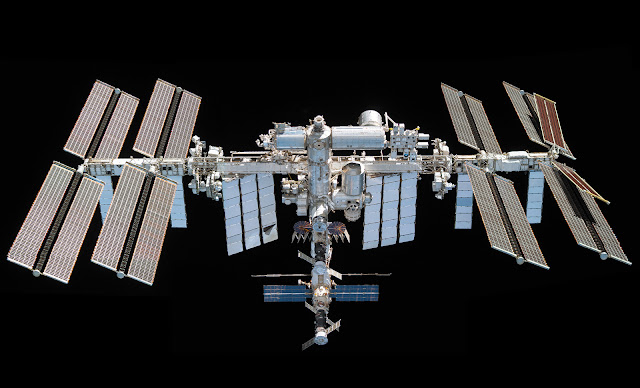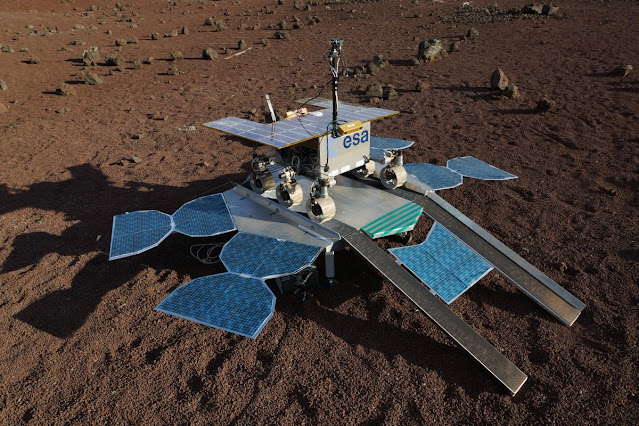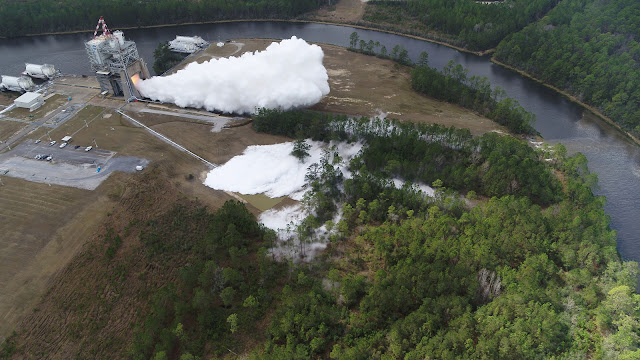ESA - Asteroid Defense logo.
Feb 24, 2022
In brief
For a few tense days this January, a roughly 70-metre asteroid became the riskiest observed in over a decade. Despite the Moon’s attempt to scupper observations, the asteroid is now known to be entirely safe.
In-depth
Initial observations of an asteroid dubbed ‘2022 AE1’ showed a potential Earth impact on 4 July 2023 – not enough time to attempt deflection and large enough to do real damage to a local area should it strike.
Worryingly, the chance of impact appeared to increase based on the first seven days of observations, followed by a dramatic week ‘in the dark’ as the full Moon outshone the potential impactor, ruling out further observations. As the Moon moved aside, the skies dimmed and ESA’s Near-Earth Object Coordination Centre (NEOCC) took another look, only to find the chance of impact was dramatically falling.
It has since been confirmed that 2022 AE1 will not impact Earth and has been removed from ESA’s risk list. So, what’s the story behind the excitement, and how can we trust this seemingly ‘meandering’ impact risk?
Never seen anything like it
“In January this year, we became aware of an asteroid with the highest ranking on the Palermo scale that we’ve seen in more than a decade, reaching -1.5” explains Marco Micheli, astronomer at ESA’s NEOCC.
“In my almost ten years at ESA I’ve never seen such a risky object. It was a thrill to track 2022 AE1 and refine its trajectory until we had enough data to say for certain, this asteroid will not strike”.
The Palermo scale is used by planetary defenders to categorise and prioritise the impact risk from near-Earth objects (NEOs) by combining the potential date of impact, the energy they would strike with and the impact probability.

Graphic above: The Torino scale is a simplified version of the Palermo scale, used as a communication tool to illustrate the impact hazard of asteroids from a combination of their probability of impact and the energy they could strike with.
There are asteroids out there that will certainly hit Earth but are so small they are almost imperceptible as they burn up in our atmosphere. Others might be giant, extinction-level event asteroids which could do immense damage but are travelling in orbits around the Sun that are entirely safe.
Values less than -2 on the Palermo Scale reflect events with no likely consequences; those between -2 and 0 indicate situations that merit careful monitoring, and positive values generally indicate situations that merit some level of concern.
Planetary defenders – always alert
On 7 January, one day after its discovery, asteroid 2022 AE1 was flagged for a potential future impact by the Asteroid Orbit Determination (AstOD) automated system that makes up part of the NEOCC’s suite of tools to assess the asteroid risk.
Every day, the system automatically calculates the orbits from asteroid observation data provided by telescopes and observatories around the world. It then computes the Palermo Scale values, immediately publishing the results on the NEOCC web portal.

Image above: Asteroid 2022 AE1 observed with the Calar Alto Schmidt telescope in Spain.
More risky cases – when asteroids are categorized as -2 or above on the Palermo Scale – are first cross-referenced with analysis from NASA JPL, to be extra certain of calculations before they’re published on the public page.
“I was surprised at first when I heard about the -1.50 rated asteroid, as it is very rare to have such high Palermo scale. Yet, I wasn’t too concerned as we get notifications like this – though at a lower level – few times per year,” explains Luca Conversi, Manager of the NEOCC.
“As it is custom in these cases, we activated our global network of telescopes to immediately get more observations and it soon seemed this asteroid was unlike any other we’d seen.”
The Sun never rises on ESA’s eyes on the sky …
On the evening of Saturday 8 January, Marco ‘the impactor killer’ Micheli got hold of the 80 cm Schmidt telescope in Calar Alto, which the Coordination Centre has nearly continuous access to (weather permitting), to get more data.
“There’s no waiting till Monday when you’re back in the Office with this job,” explains Marco, whose role is to gather enough data on asteroids in ESA’s ‘risk list’ such that they can be deemed safe, at which point they are removed.

Image above: ESA NEOCC has near-real-time access to a global network of telescopes.
“But I love it, it’s part of the challenge. What makes this ‘detective work’ so much easier is that we have a network of telescopes on every continent that we can access in near real-time. It’s actually a unique capability of ESA which means it’s always night-time somewhere in our network, necessary to make asteroid observations”.
ESA continued to monitor the asteroid, verifying results with NASA JPL which confirmed a worrying increase in the large rock’s chance of impact. Unfortunately, as the probability of impact peaked, observations became impossible.
… until the Moon gets in the way
During a tense week over 12-19 January, 2022 AE1 couldn’t be seen as the Moon outshone the dim potential impactor. On top of this, the asteroid was moving further away in its current orbit and getting fainter at the same time.
Moon seen from Space Station
“We just had to wait,” says Marco.
Another one bites the dust
As soon as the Moon was dim enough, the NEOCC team pointed the Schmidt telescope at where 2022 AE1 was expected to be. With one single observation, the risk level crashed – getting close to zero – and with that, the team moved on.
“The data was clear, confirmed the next morning by our counterparts at NASA - asteroid 2022 AE1 poses no impact risk,” explains Laura Faggioli, near-Earth object dynamicist in the NEOCC who computed the orbit of 2022 AE1 throughout the observation period.
Asteroid 2022 AE1 topped ESA's risk list before being removed entirely
“Had 2022 AE1’s path remained uncertain we would have used any means possible to keep watching it with the biggest telescopes we have. As it was removed from our risk list, we didn’t need to follow it anymore - time to move onto the next.”
Although some keen observers have continued to monitor the asteroid, confirming results from ESA, we now know that in early July 2023, asteroid 2022 AE1 will fly by Earth at a distance of about ten million kilometres (+/- one million km) – more than 20 times the distance of the Moon.
Asteroids often look risky before they’re proven safe
How asteroids go from threat to no sweat
It’s a funny thing about homing in on an asteroid and calculating its path, future position, and probability of impacting Earth – it will often appear risky during initial observations, get riskier, and then suddenly become entirely safe.
In the case of an asteroid on a definite collision course, the risk would keep growing until it reaches 100%. Fortunately, in most cases, the risk of impact ultimately flattens before rapidly getting down to zero – but why? Does this suggest our results are uncertain? Can we really be sure asteroid 2022 AE1 is safe?
2022 AE1’s most risky risk corridor
The very first observation of an asteroid is ‘just’ a single dot of light in the sky. At this point, it’s not clear what it is or where it’s going. A second observation is needed to reveal an object in motion, at least three are needed to determine an orbit – how quickly our asteroid is going and where it is headed. Further observations refine the orbit a little more, reducing uncertainties until we can be sure of where it won’t go: primarily to Earth.
As is often the case, the overlap with Earth remains even while the risk corridor gets smaller due to further observations – and so the risk appears to increase.
More often than not, as the hazard zone narrows, the small potential corridor moves off Earth and the risk suddenly drops. Even if some uncertainty remains about the path of an asteroid, we can know for sure it doesn’t pose a risk.
ESA’s Planetary Defence Office and Near-Earth Object Coordination Centre are now focussing on the next space rocks that could pose a threat, working with the international community to ensure that when an asteroid’s risk doesn’t drop, and an Earth impact looks likely, we are ready.
Related links:
ESA’s Near-Earth Object Coordination Centre (NEOCC): https://www.esa.int/Safety_Security/Near-Earth_Object_Coordination_Centre
ESA’s risk list: https://neo.ssa.esa.int/risk-list
Asteroid 2022 AE1: https://neo.ssa.esa.int/search-for-asteroids?sum=1&des=2022AE1
ESA’s Planetary Defence Office: https://www.esa.int/Safety_Security/Planetary_Defence
Safety & Security: https://www.esa.int/Safety_Security
Graphic, Images, Video, Text, Credits: ESA/NEOCC/NASA.
Greetings, Orbiter.ch










































